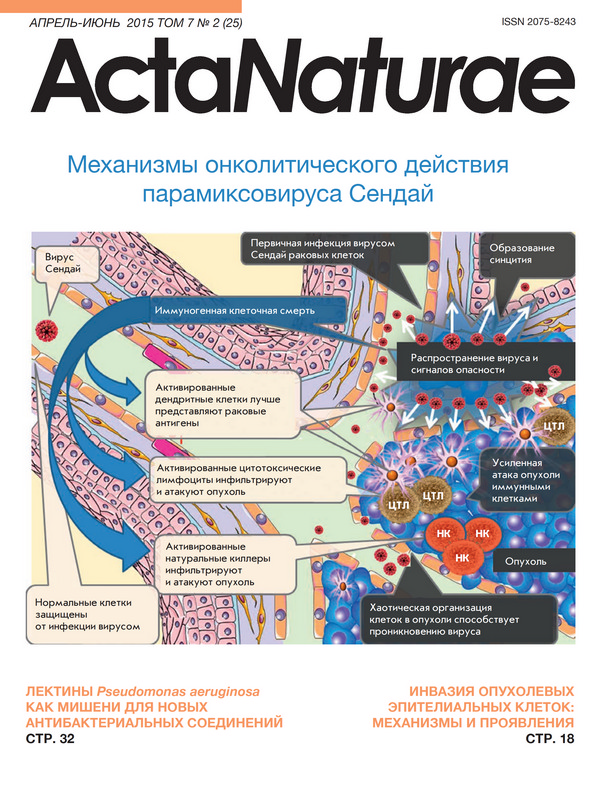The Use of Atomic Force Microscopy for 3D Analysis of Nucleic Acid Hybridization on Microarrays
Abstract
Oligonucleotide microarrays are considered today to be one of the most efficient methods of gene diagnostics. The capability of atomic force microscopy (AFM) to characterize the three-dimensional morphology of single molecules on a surface allows one to use it as an effective tool for the 3D analysis of a microarray for the detection of nucleic acids. The high resolution of AFM offers ways to decrease the detection threshold of target DNA and increase the signal-to-noise ratio. In this work, we suggest an approach to the evaluation of the results of hybridization of gold nanoparticle-labeled nucleic acids on silicon microarrays based on an AFM analysis of the surface both in air and in liquid which takes into account of their three-dimensional structure. We suggest a quantitative measure of the hybridization results which is based on the fraction of the surface area occupied by the nanoparticles.
References
Schena M., Shalon D., Davis R.W., Brown P.O. // Science. 1995, V.270, P.467-470
Yoo S.M., Choi J.H., Lee S.Y., Yoo N.C. // J. Microbiol. Biotechnol. 2009, V.19, №7, P.635-646
Behr M.A., Wilson M.A., Gill W.P., Salamon H., Schoolnik G.K., Rane S., Small P.M. // Science. 1999, V.284, P.1520-1523
Nuwaysir E.F., Bittner M., Trent J., Barnett J.C., Afshari C.A. // Mol. Carcinog. 1999, V.24, P.153-159
Iida K., Nishimura I. // Crit. Rev. Oral Biol. Med. 2002, V.13, P.35-50
Sassolas A., Leca-Bouvier B.D., Blum L.J. // Chem. Rev. 2008, V.108, P.109-139
Herwig R., Aanstad P., Clark M., Lehrach H. // Nucleic Acids Research 201, V.29, P.e117
Ryan O., Smyth M.R., Fagain C.O. // Essays Biochem. 1994, V.28, P.129-146
Lytton-Jean A.K., Han M.S., Mirkin C.A. // Anal. Chem. 2007, V.79, P.6037-6041
Liao J.C., Mastali M., Gau V., Suchard M.A., Møller A.K., Bruckner D.A., Babbitt J.T., Li Y., Gornbein J., Landaw E.M. // J. Clin. Microbiol. 2006, V.44, P.561-570
Malic L., Cui B., Veres T., Tabrizian M. // Opt. Lett. 2007, V.32, P.3092-3094
Hering K.K., Moller R., Fritzsche W., Popp J. // ChemPhysChem. 2008, V.9, P.867-872
Kim H., Takei H., Yasuda K. // Sens. Actuators. B. 2010, V.144, P.6-10
Adamcik J., Klinov D.V., Witz G., Sekatskii S.K., Dietler G. // FEBS Lett. 2006, V.580, P.5671-5675
Dubrovin E.V., Staritsyn S.N., Yakovenko S.A., Yaminsky I.V. // Biomacromolecules. 2007, V.8, P.2258-2261
Dubrovin E.V., Gerritsen J.W., Zivkovic J., Yaminsky I.V., Speller S. // Colloids Surf. B. 2010, V.76, P.63-69
Dubrovin E.V., Fedyukina G.N., Kraevsky S.V., Ignatyuk T.E., Yaminsky I.V., Ignatov S.G. // Open Microbiol. J. 2012, V.6, P.22-28
Dubrovin E.V., Popova A.V., Kraevskiy S.V., Ignatov S.G., Ignatyuk T.E., Yaminsky I.V., Volozhantsev N.V. // PLoS One. 2012, V.7, №10, P.e47348
Dupres V., Verbelen C., Dufrêne Y.F. // Biomaterials. 2007, V.28, P.2393-2402
Oh S.J., Cho S.J., Kim C.O., Park J.W. // Langmuir. 2002, V.18, P.1764-1769
Legay G., Finot E., Meunier-Prest R., Cherkaoui-Malki M., Latruffe N., Dereux A. // Biosens. Bioelectron. 2005, V.21, P.627-636
Lenigk R., Carles M., Ip N.Y., Sucher N.J. // Langmuir. 2001, V.17, P.2497-2501
Festag G., Steinbruck A., Wolff A., Csaki A., Moller R., Fritzsche W. // J. Fluoresc. 2005, V.15, P.161-170
Han W.H., Liao J.M., Chen K.L., Wu S.M., Chiang Y. W., Lo S.T., Chen C.L., Chiang C.M. // Anal. Chem. 2010, V.82, P.2395-2400
Cook M.A., Chan C.K., Jorgensen P., Ketela T., So D., Tyers M., Ho C.Y. // PLoS One. 2008, V.3, P.e154
Lavalley V., Chaudouët P., Stambouli V. // Surf. Sci. 2007, V.601, P.5424-5432
Bush K. // Ann. N.Y. Acad. Sci. 2013, V.1277, P.84-90
Rubtsova M.Yu., Ulyashova M.M., Bachmann T.T., Schmid R.D., Egorov A.M. // Biochemistry (Mosc). 2010, V.75, P.1628-1649
Frens G. // Nat. Phys. Sci. 1973, V.241, P.20-22
Rubtsova M.Yu., Ulyashova M.M., Edelstein M.V., Egorov A.M. // Biosens. Bioelectron. 2010, V.26, №4, P.1252-1260
Lamture J.B., Beattie K.L., Burke B.E., Eggers M.D., Ehrlich D.J., Fowler R., Hollis M.A., Kosicki B.B., Reich R.K., Smith S.R. // Nucleic Acids Research 1994, V.22, P.2121-2125
Supplementary files
Supplementary Files
Action
1.
JATS XML
Copyright (c) 2015 Dubrovin E.V., Presnova G.V., Rubtsova M.Y., Egorov A.M., Grigorenko V.G., Yaminsky I.V.
This work is licensed under a
Creative Commons Attribution 4.0 International License .







